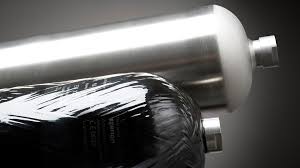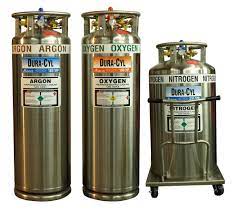
Cylinder Inspection Training: Why a Maintained Cylinder Is a Happy Cylinder
Uncover the importance of gas cylinder inspections and training. Dive deep into ensuring safety, boosting efficiency, and prolonging cylinder life.
People seem to be adamant about a few things in life; meat vs. vegan, toilet seat up or down, country music vs. rock and roll or diving with a steel cylinder vs. an aluminum cylinder. Whether its steel or aluminum they are both designed to store a pressurized gas. They both need to be carried with you during a dive (yes, even rebreather divers need some type of cylinder). And both materials offer a variety of sizes. Since they are so similar, why do some people insist on one type over another?
Steel cylinders are slightly more negative, and do not become buoyant at the end of a dive. This appears to be the main reason why people choose steel over aluminum. They are not looking further and weighing other considerations. The most obvious is the shape of the bottom of the steel cylinder. Since it is round, it requires a boot to be placed on the bottom to be able to stand while placing on any equipment. The boot acts as a trap for the moisture. If the boot is not removed regularly, and water stays trapped against the metal, corrosion can potentially shorten the cylinders life span.
Steel cylinders are also more prone to problems once moisture enters the cylinder. Whether the moisture is caused by a compressor or water enters the cylinder as the pressure is drained from the cylinder while in the water, the moisture creates an ideal situation for interior corrosion. If this corrosion goes unchecked it can begin to eat away at the metal and create pits within the structure. This pitting can weaken the metal and eventually cause it to fail.
To overcome the primary concern of buoyancy all a person has to do is add a few more pounds of weight on to the weight belt or into the weight pockets. When someone complains about needing to add a few more pounds, they are forgetting that a steel cylinder is heavier than a similarly sized aluminum cylinder. Whether it’s the weight of the cylinder or the weight on the diver, its still weight.

I enjoy continuing to build the business based on safety since 1999. CTS focuses on the inspection of high pressure cylinders, the maintaining of the valves and basic maintenance of high pressure compressor systems. CTS stays current in techniques and tools to train both the new and novice employee. We publish articles, update training tools and have created an APP to assist during the inspection process.
#cylinder #safety #hazmat #training #cylinderinspectiontraining #cylindex

Uncover the importance of gas cylinder inspections and training. Dive deep into ensuring safety, boosting efficiency, and prolonging cylinder life.

Is your composite cylinder showing signs of wear? Discover when to seek a professional repair service in our comprehensive guide.

29 CFR 1910.101 intro Handling cryogenic cylinders involves working with extremely low-temperature gases that pose unique safety risks. To ensure the safe handling, storage, and transportation of these hazardous materials,

Introduction Firefighters encounter many risks while on duty, including hazardous materials and high pressure bottles. High pressure bottles are used for a variety of purposes in firefighting, including powering hydraulic